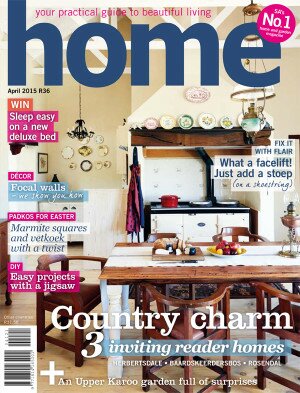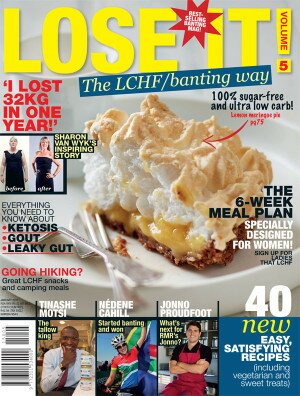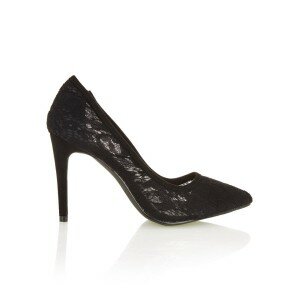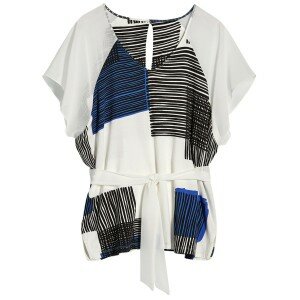-
Book binding ideas
30 April 2013
Whether you’re binding a book yourself, or just covering one, it’s always wonderful to have something beautiful to write in.
Travel journal
This little book has envelopes and inserts with little pockets between the regular pages, into which you can deposit trinkets and treasures that you collect on your travels.You will need
• paper chipboard for the front and back covers
• 80gsm bond paper for the pages
• 160gsm cardboard for the end pages and inserts
• decorative paper for the cover
• paper envelopes
• matching ribbon
• needle and thread (number 40 crochet yarn)
• beeswax
• bone folder
• awl or large nail to make the holes
• cold glue and craft brush
• double-sided tape
• craft knife, cutting mat and metal rulerShort glossary of book-binding terminology
Signatures – a stack of loose pages, folded together, usually three sheets. Paper block – the signatures are sewn together to form a paper block.
End pages – the first and last pages of the book, which are usually cut from heavyweight paper, used to line the inside of the front and back covers.
Paper grain – the direction of the fibres in the paper you’re using. The grain tells you which way to fold the paper and it must always run parallel to the spine of the book.To make
1 Do the signatures first. Start by measuring the size of your envelopes (ours are 115 x 160mm) and cut the 80gsm bond paper so that it’s twice as wide as a single page (ours is 230 x 160mm). We made 12 signatures in four different variations.Variation 1 Two sheets folded double with an envelope on the inside. Carefully loosen the sides of the envelope so you can bind them in along with the pages.
Variation 2 Two sheets folded double with an insert of 160gsm cardboard in the centre. Cut the cardboard to the same width as the pages (ours is 230mm), but 60mm longer, to form the ‘pocket’. Fold the 60mm section upwards and secure the sides with double-sided tape. Fold the cardboard double with the pocket on the outside.
Variation 3 Two pages folded double with an insert of regular cardboard (without a pocket) in the centre. Cut the cardboard to the same size as the paper.
Variation 4 Three pages that are folded double.2 Stack the signatures in the sequence you’d like to assemble them, to form the paper block.
3 Make the holes for the binding. Make a paper ruler of the same length as your signatures (ours is 160mm), to use as your guide when marking the spacing between the holes. Make a mark 10mm from each end of your paper ruler (or more, depending on the size of your book) to indicate where the outer sets of holes must be. Measure the distance between the two marks (ours is 140mm) and divide by an uneven number such as 5, 7, 9, and so on, to give a measurement that is slightly wider than your ribbon. Our ribbon is 15mm wide, so we used 7 x 20mm. Mark the 20mm spaces between the marks at 10mm to determine where the inner set of holes must be.
4 Slide your paper ruler in under- neath the paper block. Hold your metal ruler perpendicular to the spine of the paper block and mark each signature by drawing a line on the spine.
5 Work on a clean wooden board. Open the top signature and place it on the wooden board with the fold facing upwards. Use an awl or a large nail to make the holes where you made the marks in step 2, then set aside. Repeat to do the remaining signatures, keeping them in the right sequence.
6 Cut a length of crochet yarn five times longer than your signatures (ours is 5 x 160mm = 800mm). Coat the yarn in beeswax to prevent tangling and to strengthen the knots, then thread through the eye of your needle.
7 Take the top signature and place it on the wooden board with the fold right up against the edge, to give you height to work. Insert the needle through the first set of holes on the far right, followed by the second set of holes alongside. Pull through the yarn, leaving a loose section of about 50mm.
8 Cut two lengths of ribbon measuring 80mm each and one of about 650mm (to secure the book). Place one 80mm length between the second and third sets of holes and pull the needle through the third set of holes, then back through the fourth set. Pull the yarn so the ribbon is attached but not too tight. Repeat to attach the long ribbon between the two middle sets of holes, and the second 80mm strip between the sixth and seventh sets of holes, then pull the needle through the final set of holes. Smooth out with a bone folder.
9 Place the second signature on top of the first and repeat to thread the yarn through the holes as before, but this time working from left to right. Smooth out with your bone folder. Don’t cut off the yarn, but attach it to the loose end.
10 Place the third signature on top of the second and repeat, this time working from right to left. At the last hole, insert the needle from right to left under the yarn between the second and third signatures, so the yarn forms a loop before you pull the needle through it from below, then pull the yarn tight to form a kettle stitch. Smooth out the fold.
11 Repeat to attach all the signatures. As your yarn is coming to an end, finish on the side where you started originally (in this case on the right). Cut off the yarn leaving about 50mm, then start another signature with a new length of yarn. Thread your needle under the ends of the old and new yarn to form a loop, then pull the needle through the loop from below, to form a slip knot.
12 End with a double chain-stitch after the last signature. Trim all the loose bits of yarn so the ends are 5mm long, then smooth out the folds one last time.
13 Adjust the ribbons so the short ones protrude at equal lengths, and the long one is arranged according to how you’d like to tie it around your book. Paint a very thin coat of cold glue across the back of your paper block and smooth out the ends of the yarn. Leave to dry.
14 Reattach the sides of the envelopes with double-sided adhesive tape.
Covered books
These books were covered with beautiful paper. Make a few to give to someone as a present. We made a card from a letter cutout and tied our gift with a leather thong.
Cover
1 Cut the end pages from 160gsm cardboard so they’re the same size as the paper, then fold double.2 Paint a narrow strip of cold glue right alongside the fold of one end page and glue it to the first page of the paper block. Smooth out with your bone folder. Repeat to do the other end page.
3 Apply a little cold glue to the back of each short length of ribbon and attach to the end pages. Secure by smoothing with a bone folder.
4 Cut the covers from the 240gsm paper chipboard so they protrude 5mm at the top, bottom and front of the paper block (ours is 120 x 170mm). Also cut two pieces of decorative paper 15mm larger than your paper chipboard (ours is 150 x 200mm).
5 Paint a very thin strip of cold glue over the wrong side of one piece of decorative paper and place one of the pieces of paper chipboard in the centre, pressing down to secure. Smooth with your bone folder. Cut the four corners at 45° and fold over the long sides, then the short sides, for a neat finish. Repeat to do the other cover.
6 Insert a loose sheet of paper between the folded end pages. Paint a very thin coat of cold glue over the end page and replace the sheet of paper with a clean one. Glue the front cover onto the end page so that it’s protruding 5mm at the top, bottom and front of the paper block. Smooth out with your bone folder, also on the inside. Leave the loose sheet of paper between the end pages for now. Carefully rub off any excess glue that seeps out along the edges. Repeat for the back cover.
7 Place a heavy object on your book and leave to stand overnight.
Good idea Use dental floss to bind small books.
Notebook with elastic
This is a cute accessory to carry in your handbag. You could also add a label on which to write your name.You will need
• A6 hardcover book
• decorative paper for the cover
• matching elastic
• bone folder
• glue gun
• cold glue
• craft knife, cutting mat and metal rulerTo make
1 Measure the size of the cover. Fold a sheet of paper around the book and mark where the front and back pages start and end. This measurement must therefore include the spine. Also measure the length of your book.2 Transfer these measurements to the wrong side of your decorative paper. Then add 15mm right round and draw these lines too. Cut out along the outer lines.
3 Smear cold glue all along the inner lines and fold the paper around the book. Keep the book closed and smooth out with your bone folder. Leave to dry.
4 Open the book and cut the four corners at 45°. Smear cold glue all over the sides, fold in the short sides and then the long ones, to attach securely.
5 Position the book so the back cover is facing you. Use a craft knife to make two incisions in the centre, next to the spine, cutting right through the back cover. Cut a length of elastic to fit around the book and thread the two ends through the holes. Use a glue gun to secure the ends of the elastic to the inside of the back cover.
6 Glue the last page of the book to the inside of the back cover to conceal the elastic.
7 Open the book at the first page and measure the length and width. Cut end pages that are 5mm smaller right round. Fold in half, apply a little cold glue to the end page and press in place. Repeat for the back cover.









